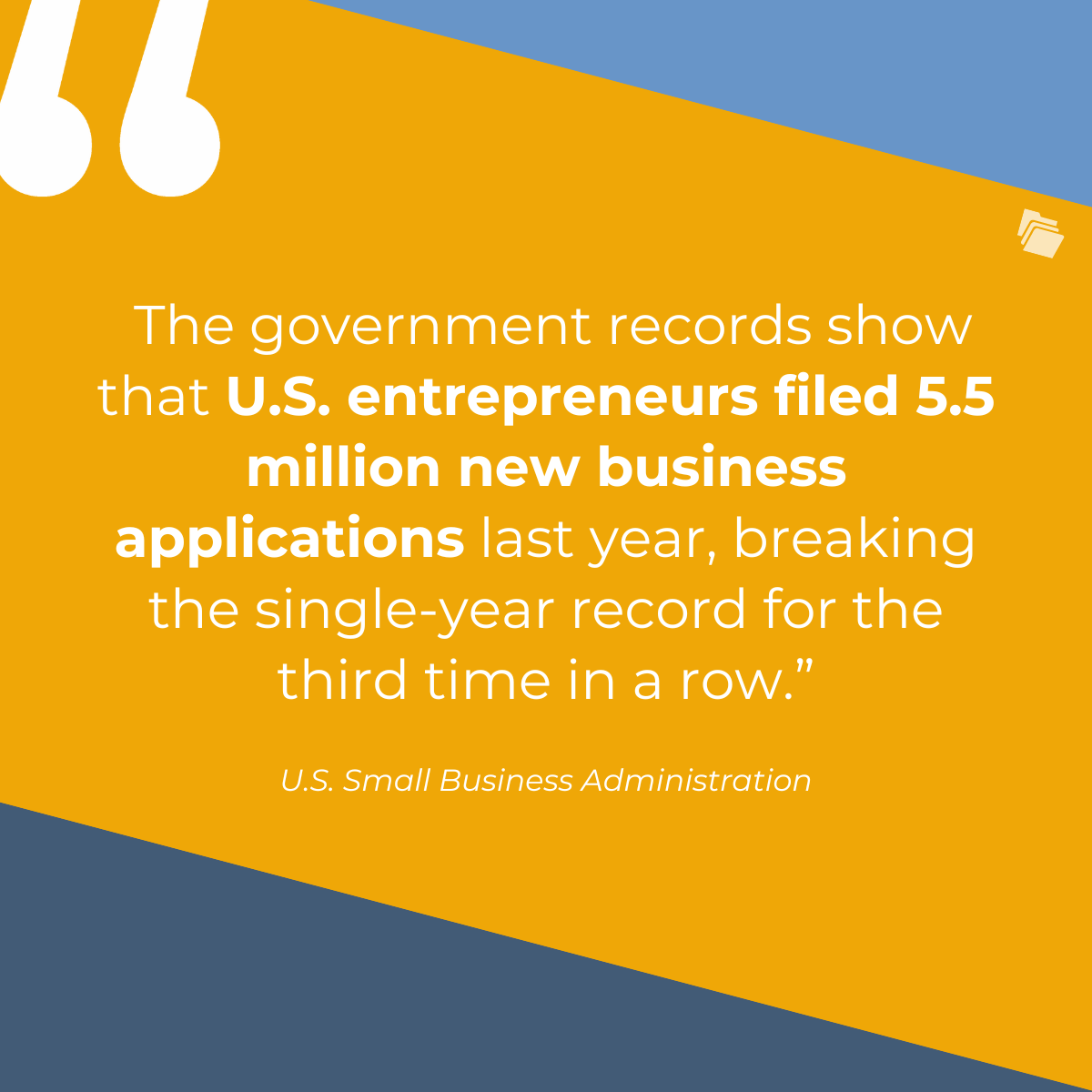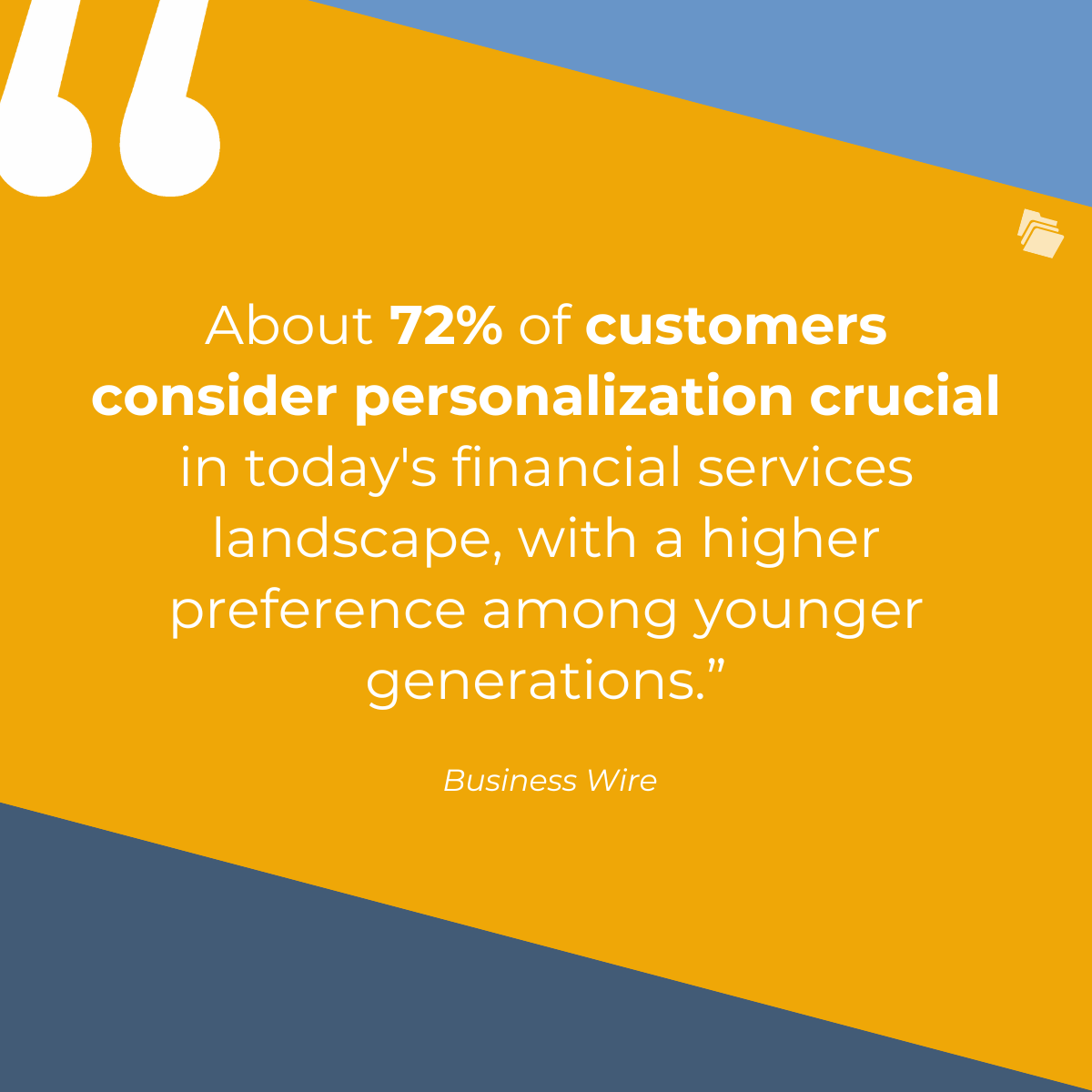Commercial lending is a fundamental part of the financial services sector, fueling business growth and economic development. The field is currently experiencing significant transformation, driven both by technology and changing market dynamics.
With 2023 Q4 data tabulated, government records show that U.S. entrepreneurs filed 5.5 million new business applications last year, breaking the single-year record for the third time in a row.
In this evolving landscape, three emerging technology trends are particularly noteworthy for 2024:
Additionally, evolving business requirements for commercial lending are reshaping product offerings and service delivery. Connectedly, the sector is navigating through recent and impending regulatory changes, emphasizing compliance and risk management. This guide examines these trends that will collectively shape the future of commercial lending, promising enhanced efficiency and customer satisfaction.

Current Landscape of Commercial Lending
The commercial lending landscape is currently marked by a competitive environment with interest rates up and commercial mortgage-backed security (CMBS) issuance down 36% over 2022 totals. According to data compiled in ResearchDive’s Commercial Lending Market Report, key players in the field include major financial institutions such as:
- American Express Company
- Credit Suisse
- Fundbox
- Funding Circle
- Goldman Sachs
- Kabbage
- Fundation Group LLC
- LoanBuilder
- Merchant Capital
- OnDeck
These organizations play a crucial role in shaping market trends and driving innovation in commercial lending practices.
This sector similarly faces several challenges. A primary concern is the increase in non-performing assets (NPAs), especially during volatile economic periods. The integration of digital lending services, while presenting a significant opportunity, also poses a risk of non-performance by digital lending organizations and FinTech companies for payment collection. The need for compliance with evolving regulations adds another layer of complexity to the lending process.
Despite these challenges, the commercial lending market offers substantial opportunities. The digitization of banking operations, particularly in developing economies, and the increasing adoption of digital lending services present avenues for growth. Technological advancements, particularly in data analytics and predictive modeling, are enabling more efficient and personalized lending solutions. These trends suggest a fertile ground for innovation and expansion in the commercial lending sector.
Emerging Technologies
New technologies with applications beyond the banking and financial services sector are currently at the helm of notable trends in commercial lending. Two outstanding examples are:
AI and Machine Learning in Financial Services
The use of AI and machine learning in financial services is rapidly transforming the industry. These technologies are being leveraged to enhance decision-making, risk assessment, and customer service. A striking example of their impact comes from the credit sector, where recent studies indicate that AI-driven systems will reduce bank operational costs by 22% by 2030. AI algorithms analyze vast datasets to predict loan defaults with higher accuracy, personalize financial products, and automate routine tasks, leading to increased efficiency and improved customer experiences.
Blockchain Applications in Banking
Blockchain technology is also making significant inroads in the banking sector, potentially heralding a new era of transparency, security, and efficiency. Blockchain distributed ledger technology offers a decentralized ledger system that ensures secure and immutable record-keeping. Banks are increasingly adopting blockchain to streamline cross-border payments, reducing transaction times from days to mere seconds, and cutting costs significantly. Furthermore, blockchain facilitates smart contracts and strengthens fraud detection, underpinning the industry's shift toward more secure operations with no single-point failures.
Personalization
The commercial lending sector has witnessed significant advancements in the personalization of service, driven by the integration of technology. Lenders now leverage AI to streamline the approval process, ensuring compliance and reducing processing time. AI's pattern recognition and analytical capabilities allow lenders to automate loan document reviews, flag exceptions, and ensure adherence to local laws. This not only expedites the approval process but also enables underwriters to focus on higher-level tasks and engage in more direct contact with clients.
Recent technological advancements have transformed the way lenders interact with potential borrowers. Technology helps lenders identify high-potential customers and tailor products accordingly. Lenders use tools like AI and machine learning to pinpoint the right traditional or social media channels to reach each target group, optimizing the allocation of funds and personalizing services to meet specific customer needs.
This personalization in banking goes beyond mere product customization. Today's customers are accustomed to seamless digital experiences in other areas of their lives and they expect a blend of human and digital interactions in services, combining speed, convenience, and anticipation of their needs. About 72% of customers consider personalization crucial in today's financial services landscape, with a higher preference among younger generations. By harnessing customer data and employing AI, financial institutions can anticipate customer needs in real time and offer hard-to-resist, contextually relevant product offers.

Data Analytics and Predictive Modeling
Data analytics and predictive modeling are transforming commercial lending, offering new capabilities that were previously unattainable. Financial institutions now harness vast amounts of data to gain insights and improve the accuracy of their credit decisions. For instance, a bank with $54.24 billion in assets from small and medium-sized enterprises could see an additional $108.47 million to $216.94 million in profit by implementing improved credit decision-making models that use advanced analytics.
These models use modular architecture to integrate diverse data sources, including non-traditional records like transactional and social media data, enhancing the precision of customer risk profiles. This data-driven approach enables lenders to offer more personalized loan products, conduct AI-driven risk assessments, and make faster credit decisions. As a result, lenders are not only increasing efficiency but also expanding their customer base by accurately scoring a broader spectrum of loan applicants.
Evolving Business Requirements
Business requirements in commercial lending are evolving rapidly, mainly due to technological advancements and changing customer expectations. Companies now demand innovative credit management tools such as intelligent dashboards and flexible payment options. This shift is evident in the adoption rate of digital lending services, which has been growing significantly.
According to recent research, the sector has seen a substantial increase in the digitization of banking operations, especially in developing economies. Lenders must adapt by incorporating advanced technologies to meet these new requirements, thereby ensuring they remain competitive and relevant in the digital age.
Regulatory Developments
Recent and impending regulatory changes are significantly influencing commercial lending. The industry must navigate an increasingly complex regulatory landscape, adapting to new requirements that impact operations. For instance, the introduction of open banking regulations has democratized customer information, requiring banks to update credit decision-making models more frequently to remain competitive.
This regulatory shift is aimed at fostering transparency and competition, ultimately benefiting consumers but presenting a compliance challenge for lenders. Banks must therefore invest in compliance frameworks and technologies that can quickly adapt to these regulatory changes to avoid falling behind.
All the Tools for Modern Commercial Lending in a Single Interface with FileInvite
Optimize your commercial lending processes with FileInvite's secure portal technology. Our automated document collection system allows you to focus on delivering superior client service. Experience enhanced efficiency and close loans up to 6x faster. Join the leading lenders who trust FileInvite for a streamlined lending experience.
To learn more and request a demo, visit FileInvite today.

Related Posts: